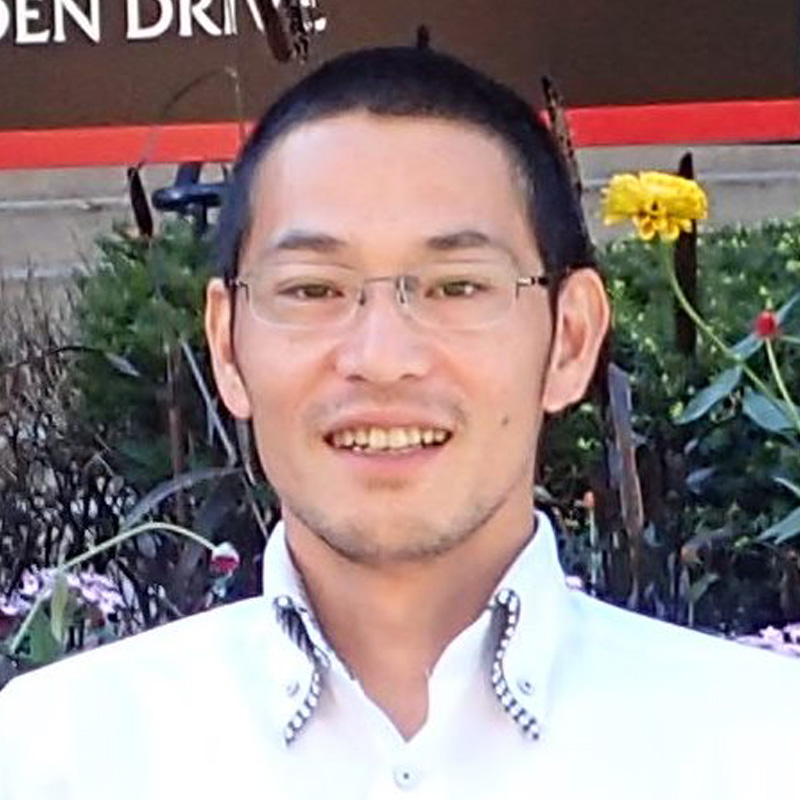MORI Masahiko Associate Professor
My DreamTo develop new cultivars dapted to the local environment.
ThemeClarification of the genetic mechanisms associated with agronomic characteristic of crop
Field
Keyword
| Academic degree | D.Agr. |
| Self introduction |
My hometown is Kyoto city. I like to play sport, so I usually enjoy cycling with my son on the weekend. I take part in a handball game a few times a year. I studied plant breeding of wheat and rice when I was a university student.I am trying to use new crops such as potato and adzuki bean for genetic analyses. |
| Room address | General Research Building I |
| Mail address | mmmori  obihiro.ac.jp
obihiro.ac.jp |
Belongs
Research Center for Global Agromedicine/Department of Agriculture and Animal ScienceResearch Department/Department of Agro-environmental Science/Division of Plant Production Science/Section of Plant Production ScienceAgritech and Livestock Innovation Hub/Plant Production Science Research Promotion DivisionIntroduction
The adzuki bean (Vigna angularis)has been cultivated throughout east Asia, and it is a traditional legume crops in these countries. In Japan, adzuki beans are the second most important legume after soybeans, with about 60% of adzuki beans grown in Tokachi region. Our laboratory focuses on the genetic traits for stable production of the adzuki bean. These areas include growth habit and plant type of the adzuki bean.
Establishment of the combine harvesting system: To decrease harvesting loss of the adzuki bean, it is necessary to improve the plant type of the adzuki bean. Present cultivars are undesirable plant type to harvest by the large combine because these have many pods near the soil surface. Recently, new lines that have adapted to combine harvesting were developed. These lines have long epicotyl length and the distance from soil surface to pod position is more than 10-cm (Fig. Differences in epicotyle length traits). But genetic mechanisms
to control epicotyl elongation are not cleared. To identify chromosomal regions and/or genes associated with epicotyl length, we have performed QTL mapping. We are interested in developing molecular markers linked to epicotyl length traits. Such markers could be incorporated into breeding programs to more efficiently select parents and screen progeny. Our long-term goals in this study are to establish new harvesting system and to contribute labour saving of agricultural work.

List of current research topics
- Study for improvement of plant type to enhance the adaptability for combine harvesting in the adzuki bean.
- Identification of genes and developing new DNA markers associated with days to maturity of pods in the adzuki bean.
| Related industries | Development new cultivars |
| Affiliated academic society | Crop Science Society of Japan (CSSJ), Japanese Society of Breeding (JSB), Japanese Society for Root Research (JSRR) |
| Academic background | 2002 Obihiro University of Agriculture and Veterinary Medicine, Crop Science – Bachelor of Agriculture 2004 Obihiro University of Agriculture and Veterinary Medicine, Crop Science – Master of Agriculture 2007 United Graduate School of Agriculture Sciences, Iwate University, Crop Science - Ph.D. 2007-2010 Japan International Research Center for Agricultural Sciences, Biological Resources and Post-harvest Division, Post-doctoral fellow 2010-2012 National Agriculture and Food Research Organization Institute of Crop Science, Wheat and Barley Research division, Post-doctoral fellow 2012- Present post |






